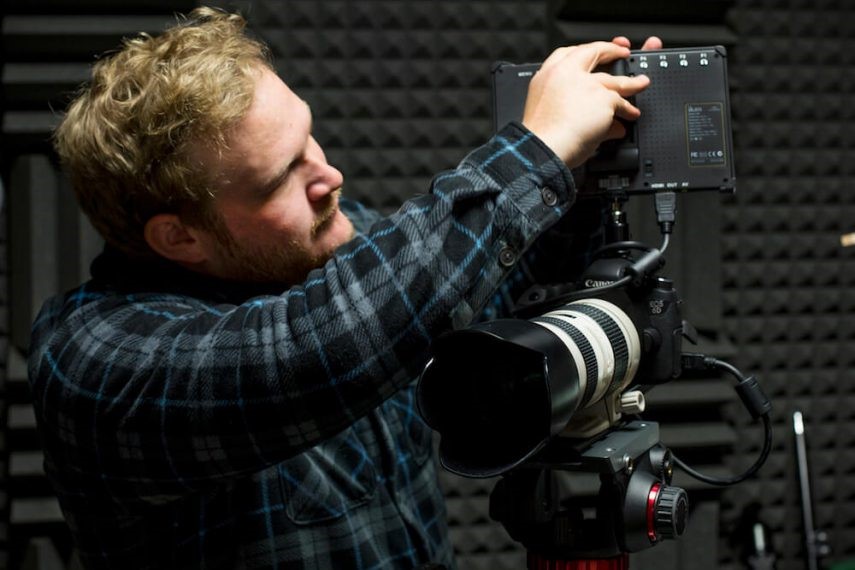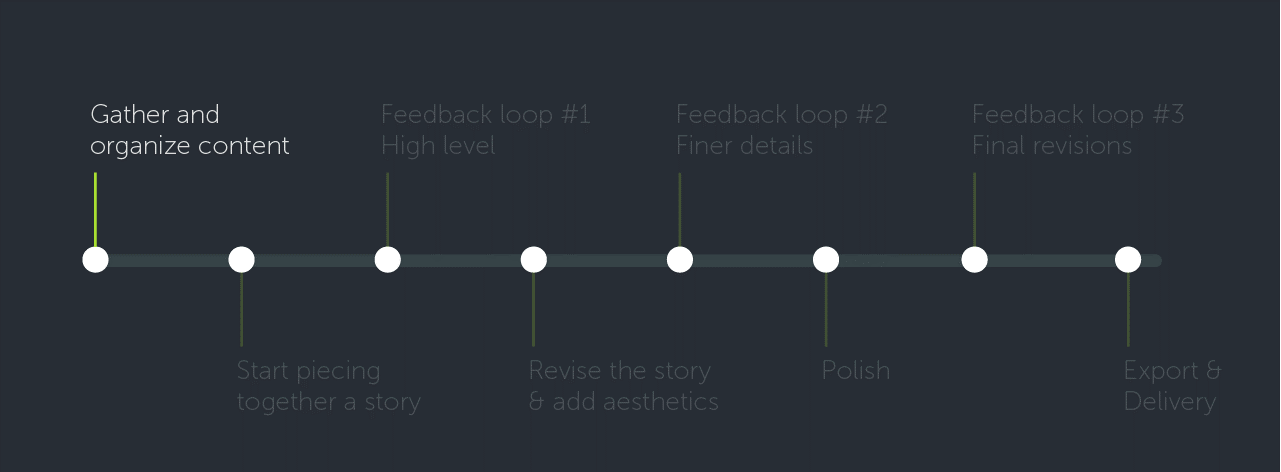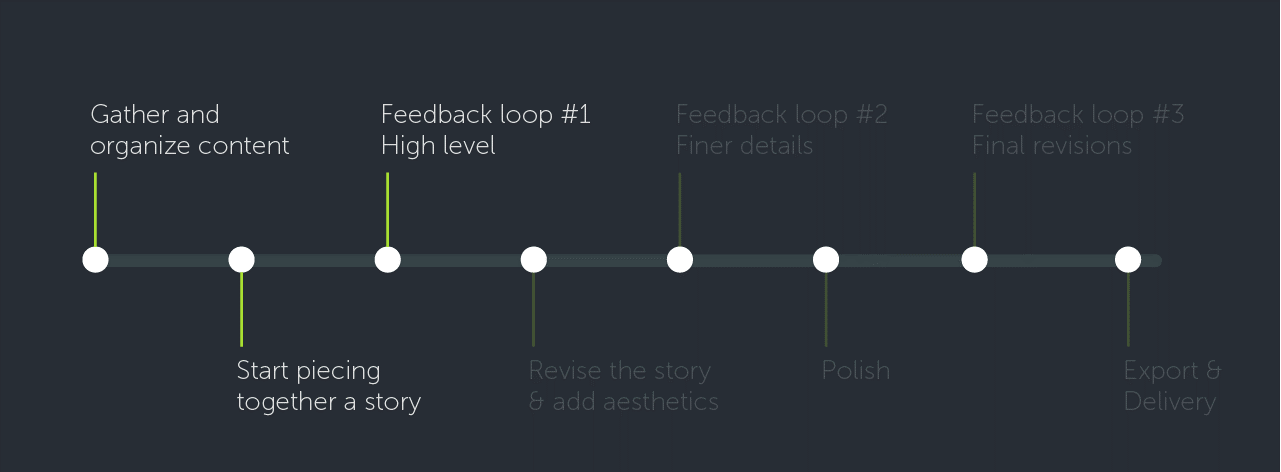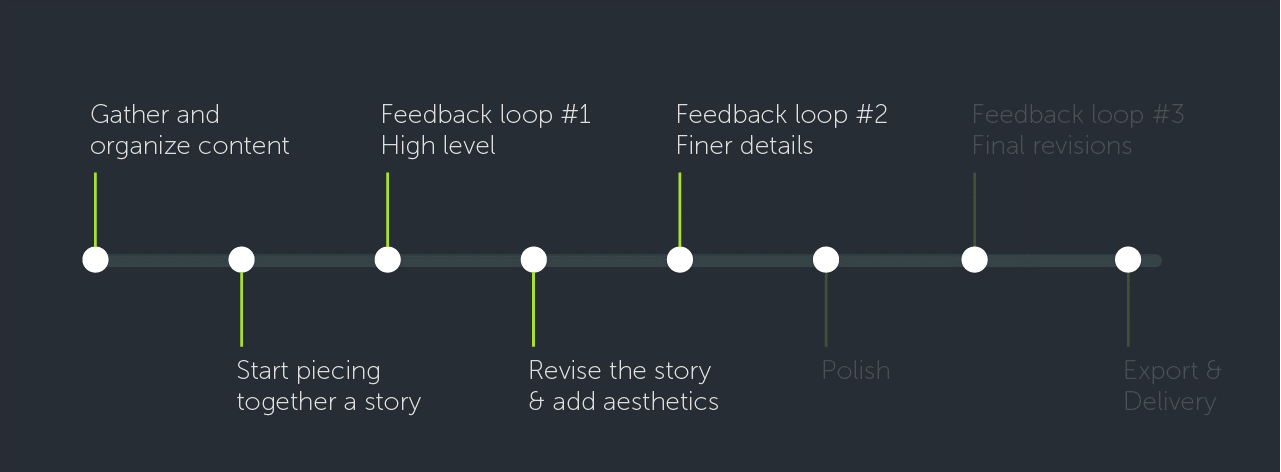How to Edit Videos – Ordering Your Editing Operations

Editing video takes some getting used to and learning the ins and outs can be a little intimidating. One of the best ways to get started doing something new is to walk a mile in the shoes of a professional to get a sense for how they do their thing. Luckily for us, TechSmith recently hired a seasoned Video Production Specialist, Barret Baxter, who is more than happy to do just that. So I sat down with Barret and picked his brain to learn how he goes about editing video and his preferred order of editing operations.
Below you’ll find our conversation. Enjoy!
Note: Even though Barret Baxter may sound like the name of a superhero’s alter ego, he’s in fact a normal man. That said, he’s incredibly talented at video editing, which is pretty super in our book.
Barret, once you’ve finished recording footage, how do you get started editing the video? What’s your order of editing operations?
“I always start by organizing the footage in Finder or Windows Explorer. It’s a very small step, but a crucial step. It will save you time in the end. I separate interviews from b-roll, then name interviews and shots based on content and location. I then organize b-roll into folders based on content and location as well. I find spending this time immersed in the footage allows me to fully comprehend what resources I have and I can begin crafting a story in my head. It sort of tricks me into starting the edit. Then, when everything is neat and organized, the foundation is built and I am ready to jump into my editor.”

Gathering and organizing content is a crucial first step of the editing process.
So, then what? You have all of your media organized, what do you do then?
“After ingesting the footage [dragging footage into the editor], I like to start with the story. I listen through all of the footage and select the pieces that resonate with the story I am trying to tell. These are ideally the best parts of the interviews and a-roll. I drag these “Selects” onto my timeline and group them based on the part of the story they’re telling. i.e. ‘This one’s about the company,’ ‘This one’s about the people,’ etc. I also start setting aside any content that doesn’t fit.”
I usually have a ton of content. How do I decide what to get rid of?
“Editing is like a funnel. You have all of this material you start with and at each step you want to focus the video by removing things that don’t belong. At the start of the funnel you may only remove a few things – clips that are out of focus, content that’s not related to the end story, etc. But as you progress down the funnel and the story begins to take shape, constantly re-examine whether or not the clip in front of you fits into the story you’re trying to tell. As you string together multiple clips that make sense, it becomes easier to identify repeat clips or sections that can be removed. At the end, you should only have video left that best tells the story. This doesn’t always work out perfectly, but since you’ve already organized all of your content, it’s easy to go back and fill in gaps.”

Getting to know your materials is a great way to begin crafting your story or message. Filter out irrelevant material.
Do you have any advice for stringing clips together?
“Start by combining shots and bites that look and/or sound good together. At this point, don’t concern yourself with where these combinations fit in the video. It’s okay to start in the middle. If two or more bites or clips go well together, put them together and listen to them. What you’ll hopefully find is that the longer you’re in this process, you’ll start to see patterns forming.”
“Don’t be afraid to try new things and experiment with different parts of the video. There’s no right or wrong answer when it comes to video. Take breaks and walk away from the process for a while; come back with a new perspective. It’s okay to fail. This is where the fun begins for me as I start to see the story unfold.”
Sweet. So, when you’re finished piecing all the clips together, you’re done with the video, right?
“Hahahahahaha, I wish. You need to get feedback. A lot of people tend to shy away from feedback, but even if you are just making this video for yourself, a second set of eyes is a crucial part of the editing process. I like to get feedback at three points in the process: after I have a basic story formed, after I’ve refined the story and added aesthetics, and then right before delivery.”

It’s always important to ask for feedback throughout the editing process. Be specific and strategic when asking for feedback.
“At this stage, we’re simply trying to make sure the story makes sense. Be strategic about whom and what you ask. Select one or two high- level stakeholders and ask specific questions, such as: ‘Are there elements of the story missing? Are there sections that don’t make sense and should be removed? Is this video telling the story it was intending to?’ Take this time to focus on higher-level ideas, such as the structure and message of the video, as opposed to visuals and aesthetics. Clarifying structure and message early on is crucial, as it’s definitely easier to steer the ship while it’s still at sea, if you catch my drift.”
I don’t. Are you saying it’s harder to fix these mistakes later on in the editing process?
“Yes.”
Got it. Can I assume that the next part is implementing feedback? What’s your opinion on accepting and denying feedback?
“Well, accepting and denying feedback is like an artform. You have to skate through multiple differing opinions and emotions. Be flexible, but always remember ‘Story is king.’ When weighing feedback ask yourself if it helps clarify or steer the story towards the desired outcome. Defend your creativity, but try not to take anything personally. Listen to the primary stakeholder and work with them. Everyone wants the same thing in the end – a quality video that tells a strong story and is visually appealing.”
“To answer your first question, absolutely, this is when I implement feedback. Also, while implementing the structural changes, I start to shift my focus to the aesthetics of the video. I add b-roll to cover jump cuts and visually backup the story, transitions to improve flow, music for emotion, etc. Now I am ready to show off my creation. This is my second revision point.“
Nice. So, what are you looking for, at this point?
“I am looking to show off. At this point, I would consider my video 95% complete. I want to get an audience’s reaction. I’ll share the edit with stakeholders from before, but also try to bring in someone that may not be familiar with the video. Ideally, I have focused far enough down the funnel, where they are only providing feedback on aesthetics or surface-level issues. Such as, “Is this what we were shooting for? Is the title correct? Is this video on brand?’ At this point, the amount of revisions should be minimal and easily fixed.”

Ask for review several times during the editing process. Ask different people to get different perspectives.
Okay, it sounds like after you make those changes, you’re finished?
“Not yet; close, very close. It’s time to polish. Smooth harsh transitions, fades, pops, correct color, add motion graphics, and level audio tracks. Really make the video shine. Once I have finished this, I am ready for my final round of feedback. I ask for peer review to make sure everything checks out, and then I export and deliver. I would add one final step: watch your finished video. I like to take a deep breath and really enjoy what I have created.”

Determine where and how this video will be viewed.
That’s some great advice. Well, Barret, this has been incredibly insightful and we appreciate you taking the time to talk with us.
“Of course, and for all of those who made it this far, please feel free to reach out with any questions in the comments section below.”
© Copyright 2000-2025 COGITO SOFTWARE CO.,LTD. All rights reserved